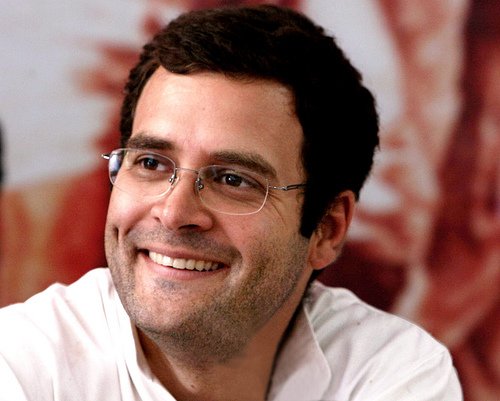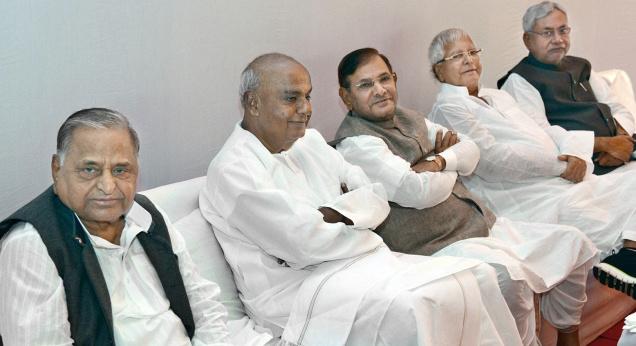
Rahul Gandhi recently came back to India from his foreign sojourn of nearly two months. And in his new avatar, Rahul is angry. One of the things he is angry about is the fact that the Narerndra Modi government after coming to power decided to go slow on increasing the minimum support price of wheat and rice. The MSP is the price at which the government buys rice and wheat from the farmers, through the Food Corporation of India(FCI) and other state government agencies.
Rahul told a farmers’ rally in New Delhi on Sunday: “We increased the MSP of wheat from Rs 540 to Rs 1400…The MSP has not changed, no benefit to farmers.”
Between 2005-2006 and 2013-2014, the MSP of wheat was increased at an average rate of 14% per year. The Congress led United Progressive Alliance(UPA) was in power throughout this period. In comparison, between 1999-2000 and 2005-2006, the price had gone up by 4% per year.
The decision to raise MSP did not have any method behind it. It was totally random. A report released by the Comptroller and Auditor General in May 2013 pointed out that “No specific norm was followed for fixing of the Minimum Support Price (MSP) over the cost of production. Resultantly, it was observed the margin of MSP fixed over the cost of production varied between 29 per cent and 66 per cent in case of wheat, and 14 per cent and 50 per cent in case of paddy during the period 2006-2007 to 2011-2012.”
Nevertheless, political decisions do not follow economic logic. But the question is did this decision to constantly keep increasing the MSP benefit the people of India at large. The answer is no. It was the major reason behind the high inflation in general and food inflation in particular, that was seen between 2008 and 2014. As economist Surjit Bhalla put it in a November 2013 column in The Indian Express “For each 10 per cent rise in previous years’ procurement prices, there is a predicted 3.3 per cent increase in the current year CPI…When the government raises the MSP, the prices of factors of production involved in the production of MSP products — land and labour — also go up.”
Food inflation hurts the poor the most. Half of the expenditure of an average Indian family is on food. In case of the poor it is 60% (NSSO 2011). What Rahul and the Congress party need to understand is that everyone associated with agriculture does not own land. As per the draft national land reforms policy which was released in July 2013, nearly 31% of all households in India were supposed to be landless. The NSSO defines landlessness as a situation where the area of the land owned is less than 0.002 hectares.
Any price rise, particularly a rise in food prices which is what an increase in MSP leads to, hurts this section of the population the most. Is Rahul not worried about them? They may not be farmers who own land, but they also farm land in this country.
Also, Rahul needs to realize that only a small section of the farmers have a marketable surplus, which they are able to sell to the government. This is primarily because the average holding size of land has come down over the decades. The State of the Indian Agricultural Report for 2012-2013 points out that: “As per Agriculture Census 2010-11, small and marginal holdings of less than 2 hectare account for 85 per cent of the total operational holdings and 44 per cent of the total operated area. The average size of holdings for all operational classes (small & marginal, medium and large) have declined over the years and for all classes put together it has come down to 1.16 hectare in 2010-11 from 2.82 hectare in 1970-71.”
This means that only a small section of the farmers make money only from agriculture. Only 17% of farmers survive on income totally from agriculture. The rest do other things as well to make money. And given this they are hurt by the food inflation because of a rapid increase in MSP.
The Congress led UPA government also increased the MSP of rice at a very rapid rate. In 2005-2006, the MSP for common paddy(rice) was Rs 570 per quintal. By 2013-2014 this had shot up to Rs 1310 per quintal, an increase in price of around 11% per year. In comparison, between 1998-1999 and 2005-2006, the MSP of rice had increased at the rate of 3.8% per year.
This rapid increase in MSP led to a huge amount of food grains landing up with the government. The FCI did not have enough space to store all this grain. “Between 2005 and 2013, close to 1.94 lakh tonnes of food grain were wasted in India, as per FCI’s own admission in the Parliament,” a Crisil Research report points out. Rice formed 84% of the total damage.
While rice and wheat rotting in government godowns, there wasn’t enough of it going around in the open market. The CAG report referred to earlier points out that in 2006-2007, 63.3 million tonnes of rice landed in the open market. By 2011-2012, this had fallen by a huge 23.6% to 48.3 million tonnes. The same is true about about wheat as well, though the drop is not as pronounced as it is in the case of rice. In 2006-2007, the total amount of wheat in the open market stood at 62.1 million tonnes. By 2011-2012, this had dropped to 61.4 million tonnes.
Also, with MSPs being increased every year at a rapid rate, “the cropping pattern,” the Crisil report points out, was also “biased towards food grains like rice and wheat,” and this led to their “excessive production”.
This is what the Congress led UPA’s policy of constantly increasing MSPs, actually did.
To conclude, as the old English saying goes, “the proof of the pudding is in eating it”. If the policy of the Congress led UPA government of increasing MSPs at a rapid rate was so good, why did the Congress party end up with only 44 seats in the 2014 Lok Sabha elections? Maybe Rahul Gandhi has an answer for that.
The column originally appeared on The Daily Reckoning on Apr 23, 2015


